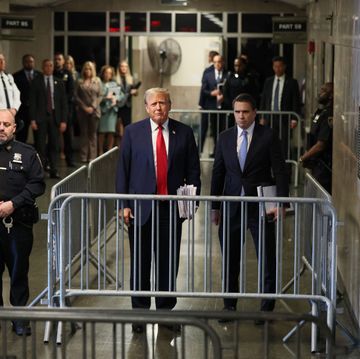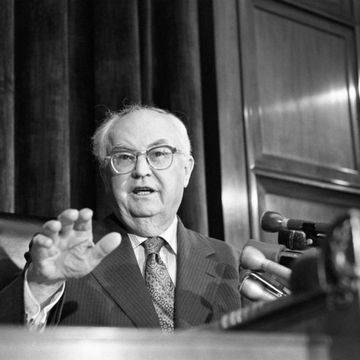The automobile has spent the better part of a hundred years relentlessly growing bigger, better, faster, angrier and with it, so have our collective balls. Small engines begat larger engines begat even larger ones, until we arrived at the point where V-6 econoboxes became the norm and muscle cars could offer enough grunt to yank the moon from orbit.
And then, this week, at the New York auto show, it stopped. Took a left turn and went down a street we haven't been down before: A helluva lot of the important new cars shown here had tiny engines. Yeah, a lot of them will also be available with bigger powerplants, but the small ones were the best ones the most soul-stirring, and with the best fuel economy. Mark my words: We will look back one day at the last couple days, and we will see a turning point. Hype and trends and analyst rantings aside, 2011 will be known as the year the future of cars got a little smaller.
I'm not sure when it happened, really, but I think it was around the time BMW BMW! Bavarian Motor Works! unveiled its new Z4. It appeared on Wednesday, resplendent in an obnoxiously Ferrari-esque shade of yellow and sporting, of all things, a 2.0-liter, four-cylinder engine under its hood. Granted, it was a turbocharged four, a fancy one with a twin-scroll turbo and multiple balance shafts (impressive stuff), but a four nonetheless. Which means you can now pretty much buy yourself a sexy, ass-hauling German sports car with the same engine layout as a Volkswagen Golf. Maybe you look under the hood and feel a little more air in your underpants. Maybe not.
That badge, those curves, a... a puny engine! It's a disconnect, like Scarlett Johansson taking off her top to reveal a bra stuffed with Kleenex, or maybe biting into a porterhouse and coming away with tofu between your teeth. On a certain level, you feel cheated. Last year, the base Z4 came standard with a 3.0-liter, 255-hp straight six; the four makes 15 horses less, though it does offer more torque and suck less fuel. (The 3.0-liter six is dead, though larger ones live on in the rest of the line.) Cue the eye roll, the disappointment: More power is more fun, and this is seemingly a move toward less.
There's a reason for all this, of course. The tiny-engine thing is partly a response to a changing social climate, but it's also the mark of engineering evolution. All the low-hanging performance and fuel-economy fruit has been grabbed; practical, no-compromise electric cars are still years off; most car companies are throwing piles of development cash at getting more from less. Smaller engines weigh less, are more efficient, and come out of the plant easier to package. With turbocharging, they can produce big power but not swill fuel. And gas is damn near five dollars a gallon, for chrissakes, so this matters. The era of the annual engine size bump of a bigger engine meaning more, more, more is rapidly coming to a close.
And you could see things speeding up with each unveiling at the New York show. Most of the cool new steel here offered up one or more dinky engines. The debuts ranged from machines like the Z4 to cars like the 2012 Subaru Impreza, which premiered with a damn smart 2.0-liter flat four. Even the upsizing has gone small: Honda unveiled a raft of new Civics, one of which was the 200-hp Si. Because people complained about past Sis being gutless wonders, the big H replaced the model's old 2.0-liter four with a 2.4-liter piece. Nissan's Leaf RC electric racing car puts out a whopping 105 hp. And the case of the great shrinking engine applies, too, to cars already here the most impressive Mustangs or Camaros you can buy are the entry-level specials, the light-on-their-feet, 300-hp V-6 models. (Same for the Dodge Charger and Chrysler 300C, incidentally.) American grunt has long been V-8 powered, and the RC doesn't even have an engine, but the point is the same sexy doesn't have to mean massive.
In less than a generation, small will have greater cachet, and ten years after that, we'll probably wonder what all the fuss was about. It'll be okay to buy a tiny mill and feel like a man, and the act will be no less emasculating than ordering a light lunch. Your sports cars will remain furious and exhilarating, your balls will not neither wither nor die. Which is decidedly a good thing.
FROM POPULAR MECHANICS: The New York Auto Show, in Pictures >>

Sam Smith is a freelance journalist and former executive editor at Road & Track. His writing has appeared in Esquire and the New York Times, and he once drove a Japanese Dajiban around a track at speed while being purposely deafened by a recording of Taylor Swift's "Shake It Off." He lives in Tennessee with his family, a small collection of misfit vehicles, and a spaniel who is scared of squirrels.














